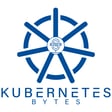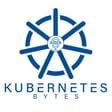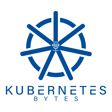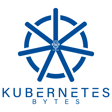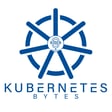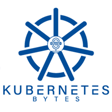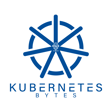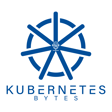Become a Creator today!Start creating today - Share your story with the world!
Start for free
00:00:00
00:00:01

Data management on various Kubernetes orchestration systems with Andy Gower
In today’s episode we explore the topic of data management on various Kubernetes orchestration systems. We have Andy Gower on the podcast as our first guest Who has a background in solutions. He previously worked at SONY Playstation and IBM and now works on solutions for Pure Storage. We’re excited to have him on the podcast to talk about some experience he has working with different orchestration systems. We talk with Andy about his past experience at IBM and explore what Kubernetes data management means for organizations looking to use a platform rather than build one themselves.
Show Links
- https://www.cncf.io/blog/2021/09/08/how-seagate-runs-real-time-analytics-at-the-edge/
- https://community.cncf.io/events/details/cncf-cncf-online-programs-presents-cloud-native-live-kubernetes-clusters-need-persistent-data
- https://ubuntu.com/blog/kubernetes-ci-cd-pipelines-what-why-and-how
- https://www.infoworld.com/article/3632142/how-docker-broke-in-half.html
- https://aws.amazon.com/blogs/aws/amazon-eks-anywhere-now-generally-available-to-create-and-manage-kubernetes-clusters-on-premises/
- https://community.cncf.io/events/details/cncf-cncf-online-programs-presents-cncf-on-demand-webinar-using-csi-snapshots-to-backup-and-restore-your-data-in-kubernetes
- https://kubernetes.io/blog/2021/09/13/read-write-once-pod-access-mode-alpha/
- https://kubernetes.io/blog/2021/08/27/minreadyseconds-statefulsets/
- https://kubernetes.io/blog/2021/08/30/volume-populators-redesigned/
- https://techfieldday.com/appearance/pure-storage-presents-at-tech-field-day-24/
- http://www.curethekids.org/events/ride-for-kids/
Transcript
Introduction to Kubernetes Bites
00:00:03
Speaker
You are listening to Kubernetes Bites, a podcast bringing you the latest from the world of cloud native data management. My name is Ryan Walner and I'm joined by Bob and Shaw coming to you from Boston, Massachusetts. We'll be sharing our thoughts on recent cloud native news and talking to industry experts about their experiences and challenges managing the wealth of data in today's cloud native ecosystem.
00:00:28
Speaker
Good morning, good afternoon, and good evening wherever you are. We're coming to you from Boston, Massachusetts, and today is September 15th. I hope everyone is doing well and staying safe.
Vacation Stories and Charity Events
00:00:40
Speaker
Let's dive into it. Bhavan, how are you? What have you been up to? I think you've been... I've had the most exciting news out of all. Yeah, I know.
00:00:50
Speaker
No, I've been on vacation for the past week and maybe eight days, I guess. I went to Hawaii, covered three of the islands there. So for me, it was a really fun week. The islands are really great, covered Big Island, Maui, and Oahu as the three islands. Everybody who I spoke to before the trip said, you don't have enough taste to justify each island or explore each island fully.
00:01:15
Speaker
And I agree with that now, having gone through the trips and gone to the islands. But whatever I could fit into those limited number of days I had on each island were really good. So like snorkeling with manta rays or going driving up in a four by four on dirt roads to Mauna Kea for sunset on Big Island or just doing a few hikes on Maui and Oahu. Everything was great. I really like Hawaii. This was my first trip there and definitely won't be the last.
00:01:42
Speaker
Wow, yeah, that is pretty special. I'm pretty jealous, actually, as well. I've been to Hawaii a few times, much earlier, probably four years ago by now, but I am reminiscing with all the things you're talking about. So that sounds like so much fun. And if you haven't been to Hawaii and you have the chance to and you're listening to this, go, just go. I know that it's like it's not an actual country, but you're flying so far. It feels like it, right?
00:02:09
Speaker
Am I right? It's a different thing. It's not mainland USA. You won't find Burger King and McDonald's in Chipotle at every turn. But your milk, your gallon of milk is $4. Yeah. True.
00:02:21
Speaker
Oh, well, I had no Hawaiian vacation, but I did go on a motorcycle ride, not the 650 miles that I did the previous week. But this was for a charity called Ride for Kids for Pediatric Brain Tumors. Revver basically does this thing every year where they raise a bunch of money for Ride for Kids. And this app basically allows you to just pop it in there. And this was the last day. So September 12th was the last day. I went up to Wachusett Mountain.
00:02:51
Speaker
So you can, yeah, you can pay just like five bucks if you're a Massachusetts resident and you can drive all the way up. So it's just kind of like a single lane road all the way up to the top. And so that was, that was actually a lot of fun. I know. Like they have a koi pond on the top, which is surprising. I don't know if you've got a chance to see that, like right off the parking lot.
00:03:10
Speaker
I hiked what you said in the spring and when we reached there, that was a good surprise. But then we also had found like a little bakery on the bottom where we had reserved a cheesecake or I think it was a carrot cake. So like we did the hike and on the way back, we're just anticipating like, okay, how good is that carrot cake going to taste now? It's all about carrot and the stick, right? That's right. Exactly. It'll work for your treats.
00:03:36
Speaker
Yeah, yeah, definitely a cool little place around here. I mean, we don't have many mountains in central Massachusetts. That might be pretty much the only one I would qualify. So you have to drive like to New Hampshire to go to White Mountains. Yeah, the Berkshires are pretty nice, but that's, you know, two and a half hours from Boston. It's quite a trip.
Guest Introduction: Andy Gower
00:03:55
Speaker
Anyway, so today is a really special episode. It's our first episode where we have a guest on our show. Our guest today is going to be Andy Gower. So he has a large background in solutions work. He previously worked at Sony PlayStation and IBM and now works for our solutions at Pure Storage. We're excited to have Mon and really talk about some of the experience he has working with the various Kubernetes data
00:04:20
Speaker
orchestration systems and really like what the difference is about the different orchestration systems and what data management platforms they have. I'm pretty excited. How about you? Yeah, it's great to have Andy on, right? Like, as you said, he has quite the experience with different orchestration platforms. He comes from IBM having worked on Red Hat, OpenShift and IBM Cloudpack. So it would be good to get that background off of him and information around around those offerings.
00:04:45
Speaker
Yeah, I think he's got some specific background with a sort of spectrum line of storage as well. So we'll dig into all those fun little facts in a little bit when we have him join the show. Before we do that, let's dive into
EKS Anywhere Launch and Partners
00:04:59
Speaker
the news, though. I know you want to talk about EKS Anywhere, right? Yeah, that's the only thing. I came back, I was catching up on my emails and the blogs that I subscribed to, and that's the only thing that popped out to me. EKS Anywhere originally announced at reInvent 2020.
00:05:13
Speaker
finally is made generally available. It is a service that allows you to run the EKS distro on VMware vSphere, so you can run it on-prem and connect back to your AWS console. So this is different from the managed EKS service because this is, if you look at the shared responsibility model, you will be managing the infrastructure, you will be managing the lifecycle of your EKS clusters, but you know for a fact that this is an open source, validated, supported,
00:05:42
Speaker
distribution from AWS that you can use to run Kubernetes inside your own data center. It uses a few open source plugins like it uses cilium for the CNI plugin. It gives you a connector. They just call it the EKS connector that
00:05:59
Speaker
If you run a YAML file, it connects back to your AWS account so you can manage your on-prem cluster from the AWS console as well. And then you need, I think, the AWS Anywhere support subscription with an AWS enterprise support to make sure you are running a supported version or you get support from AWS if anything goes wrong. But it allows you to run a Kubernetes cluster that's in a connected, disconnected or partially connected way in your AWS environments. So that's cool.
00:06:27
Speaker
Yeah, EKS Anywhere is a really cool technology that's, you know, coming out. And I think I saw a bunch of different launch partners for EKS Anywhere that actually allow you to do a lot of things with staple services. So, you know, pure being one of them, I know there's a whole slew of different launch partners.
00:06:50
Speaker
Yeah, not just from a storage perspective. I saw Splunk coming out with support for EKS anywhere from a monitoring perspective. Solo.io, I think, had integrations from a service mesh perspective. So obviously, whenever AWS makes anything generally available, they have a bunch of partners that they work with to make sure that whatever service is available to the customer is supported by the vendor ecosystem.
00:07:10
Speaker
Yeah, VMware, another one, I think, both with the Tanzu and VxRail stuff. So yeah, lots of cool news coming out of there. I haven't personally played with it yet. I really do want to, though, so we should get a lapse of that. One of the things that caught my eye was in the Kubernetes news was
00:07:32
Speaker
around the single pod access mode for persistent volumes. So if you are working with persistent volumes and you're creating a persistent volume claim, today in Kubernetes, before 1.22, you had three access modes, read write once, read only many, and read write many. So read write once is the volume can be mounted. Read write by any single node. Read only many was read only by many nodes.
00:08:00
Speaker
probably the obvious use cases, and read write many being another great one that it can be mounted and read by many nodes. And so what you'll notice is each one of those ended with node. And so what this new access mode really does is take the concept of read write once, read write many, those kind of access modes and apply them to a pod. Now, first, this is the single pod access mode for
00:08:28
Speaker
a single pod, right? So this is basically taking the read write once capability and saying that the new access mode is read write once pod. Literally that's the access mode, a very deliberate un-naming, I actually like that. So in this case, in your PVC, you'd say read write once pod and now the volume can be mounted read write by a single pod. And this is important because if you're new to storage in Kubernetes and you're mounting your read write once volume, you may think, oh, read write once.
00:08:57
Speaker
my application can access it once but the reality is if you have many pods on a single node. That pod can actually access that volume even though it's read write once and that's because it's at the node level and so we've seen this where you read write many scenarios on a single node may work but they're really not supposed to be used that way.
00:09:21
Speaker
I know we've come across that in certain things. So I think this is a really important advancement towards really taking the fine tunables of Kubernetes and where an application runs and really applying these storage specifics to a pod application
New Kubernetes Features Discussion
00:09:35
Speaker
level. Yeah, even though it's in alpha, I'm really looking forward to the different kinds of applications that come forward, right?
00:09:41
Speaker
were using read-write once, but at a node level. But now, because of the issues they might be facing with data integrity, moving to the read-write once pod, which will change how storage is consumed from inside a pod. One great thing I liked about it is you can even migrate from a read-write once to a read-write once pod mode if you have existing persistent volume. So that's really cool.
00:10:07
Speaker
Yeah, they really thought this through. I think the one thing you mentioned is this is alpha, so you need to add the feature gates of read write once pod equal true to actually use this. But yeah, you can migrate from existing volume. I think this is taking to the account that Kubernetes used everywhere. So if you want to take advantage of a new service, you're like, of course, you got to figure out how to just make my new volumes work this way. So that was really cool. I agree.
00:10:30
Speaker
All right. So, you know, there's a whole number of things that we aren't going to cover today on the news. There's some other news around minimum ready seconds for staple sets and Kubernetes one to two volume populators. So it's sort of a new design around that. Some really great articles around CSED pipelines and what they look like. We'll include all of these in the show notes or brevity. And we're not just covering news for 15 minutes.
00:10:57
Speaker
We're going to move into our core of the podcast and we're going to bring Andy on the show. Awesome. Let's do it. Welcome, Andy. Welcome to Kubernetes Bites. It's so good to have you on here. How are you doing? Good. Thanks for having me. I'm just basking in the glow of my Carolina Panthers being 1-0. We had a tough season last year.
00:11:19
Speaker
had a good run with the Jets on Sunday, so enjoying the high for now. Yeah, Anderson and Darnell had like their revenge game already. Yeah, exactly, exactly. So good move to start the week, that's for sure. But yeah, you know, I've just been, I've been here at Pure, almost three and a half, four months now. I joined from IBM and before that PlayStation, as you mentioned, and
00:11:45
Speaker
I've been just really diving into the solutions work you know what can we do here at portworks to build out what we're doing with our solutions with our solutions partners and. It's been a really fun experience apart to get to know the technology on the port work side and work with a lot of different partners to bring that to life.
00:12:04
Speaker
Well, that's perfect actually for today's topic because we want to talk about the different Kubernetes orchestration systems that are out there in the ecosystem, which ones you've had experience with. So, you know, let's start there. Which systems have you used and or worked with in the past? Yeah, so I've had kind of a fascinating journey here. So I started at IBM
00:12:26
Speaker
Five years ago, I went to school, had my MBA came out and went to work. The IBM Cloud Unit is what it was at the time at IBM. About three months into being there, they split off into this new hybrid cloud unit. It was run by Arvind Krishna, who's now the CEO over there. We focused first on how do we develop multi-cloud
00:12:50
Speaker
offerings for folks to use. But it was kind of before Kubernetes had really grown. So we're using Terraform, we're using Chef, we're doing a little bit with multi-cloud, but not really using the technology needed to get to the next step. And after about six months there, all of a sudden they came to us and said, hey, we want to build this thing called IBM Cloud Private. It's going to be built on this new thing called containers and Kubernetes. It's going to be our flagship offering. And we really need to dive in
00:13:17
Speaker
I have a person to build inside and really growing it so i got to be part of that launch i was a lead marketer for that launch and really it was my first turn to what are containers what is kubernetes why is it so important to add services around generic option kubernetes customers can start using these platforms in production and use them for mission critical workloads and that for about a year and then.
00:13:42
Speaker
IBM bought Red Hat. We went from this IBM Cloud Private product to all of a sudden $34 billion spent to buy OpenShift and IBM Cloud Private went to the dustbin of history and OpenShift became the de facto platform. I have to shift my focus from IBM Cloud Private to all things OpenShift. I spent the last two and a half years doing a mix of
00:14:05
Speaker
work with IBM and OpenShift on the Cloud Pak side. So how do we put together apps and app services that can sit on top of OpenShift around data and integration and application development and give those to enterprises to help build their new applications. And then I shifted to product management with IBM Storage and IBM Storage for OpenShift. So really, how do we build out
00:14:27
Speaker
the offerings needed to support OpenShift with our customers around the world. So I've touched some of the other platforms, but my focus before joining this role is really on OpenShift and IBM Cloud Private. And then how do we support those on the public cloud? So OpenShift on Google, OpenShift on Microsoft, OpenShift on AWS. Yeah, that definitely helped you bring the multi-cloud thing to reality, right? Having the same consistent platform on all the different vendors.
00:14:57
Speaker
Yeah, and that's when what's so exciting about my shift from my time at IBM to here at Portworx is, you know, there is focus very much on OpenShift and there is a strong hybrid multi cloud story on top of OpenShift, of course. But at Portworx, we go beyond that. We brought it and we can support OpenShift, but we also support Tanzu. We also support AWS. We also support Azure, all the Kubernetes platforms. So it's been really exciting to get to dive in deeply to those platforms and start to understand
00:15:26
Speaker
how those platforms are helping customers in ways similar in ways different from my open shift time. Yeah, and I think, you know, given that there's so many organization systems out there these days, I think open shift container platform is one of the biggest even today. I mean, that is that what you've been seeing as well? Yeah, that's what I've been seeing and you know, it's.
00:15:46
Speaker
There's really two ways that this has come to be, at least from what I've seen. There's the folks who kind of grew up with the, I want to build something on-prem in my data center. I maybe tried cloud, what will kind of say cloud 1.0, the first type of cloud where I put stuff out there. I heard about cloud. I was just all in on cloud and I realized that
00:16:06
Speaker
wasn't quite what had been promising me. It was expensive. Putting a mission-critical app onto the public cloud was very expensive, very difficult to manage, a lot of uptime, and had some regulatory issues. Maybe I could have managed the data the way I needed to. And so those folks started bringing those apps back on-prem, but they wanted the benefits of cloud. And so OpenShift really served as that first foray into
00:16:29
Speaker
Let's get those benefits of cloud and put them on your data center, give you the scalability, give you the data management capabilities, give you the ability to move that app globally where you need to, but do it behind the safety of your firewall, do it behind the safety of your data center. So I think that's really where a lot of folks have started. But I think we've also seen in the last couple of years a big ramp up in public cloud uses.
00:16:55
Speaker
started building on the public cloud, saw that Kubernetes and containers were the way of the future and said, let me just use the managed Kubernetes offering that Amazon offers or Microsoft offers or Google offers, because I'm already using those cloud services for the rest of my enterprise. Let me just extend those to this new Kubernetes world I'm looking at. So I think we're seeing a big rise there, but I think OpenShift continues to really have a big place on-prem in the data center.
00:17:24
Speaker
Yeah, I think, you know, the ultimate question there is that you're getting so much extra out of the box with OpenShift container platform, you're getting multi cloud, you know, it kind of leads me into the place where, you know, there are so many out there, like GKE and AWS EKS, Azure AKS, VMware Tanzu, SUSE Rancher, like there's so many, right in your experience, like
00:17:47
Speaker
You're getting all these things, so what benefits do organizations get when they choose an orchestration
Container Orchestration Platforms
00:17:53
Speaker
platform? I know we're going to talk about data management, but there's a lot more decision making that goes into that, right? There is. The analogy I like to use is if you want to build a car, you could, of course, source all the parts yourself. You could build it yourself. You could put the windows on. You could put the tires on. You could put the chassis together. You could do that whole process yourself.
00:18:12
Speaker
But you would be responsible for making sure the tires still work and the engine still works and making sure it all fits together correctly and making sure The light signals work making sure the whole package works the way it needs to do when you actually drive the car
00:18:25
Speaker
I think of these container orchestration platforms as an already built car. So whether it's Red Hat or VMware or Rancher or a public cloud, they're giving you the car. They're saying, hey, here's the car. It's got all the services you need to actually run in production. The turn signal works. Seats are nice. It's got the air conditioning.
00:18:44
Speaker
and we'll take care of it for you. So if a security issue comes up with the air conditioning, we'll roll out a patch. If you have an issue with the tire, we'll help you change the tire. So as an enterprise, instead of focusing on stitching together different parts of the car, you can focus on actually driving the car and making it work for your business and putting those apps into production that you need to really make containers successful in your enterprise. So I think that's the key. Of course, if we all have
00:19:11
Speaker
five thousand people working we could do it yourself but that's just not realistic for most enterprises. That's a great analogy. The one I remember is Jeff Bezos did a Y Combinator talk like 10-12 years back where he said there was a brewery in Germany that was producing its own electricity.
00:19:27
Speaker
And then eventually that they figured out that just by producing their own electricity, they're not making the beer better. So they made sure they use a local provider to handle the electricity part for it. And then they are spending time on making the beer better. So that definitely like ties into like, if I'm using a managed service, either on-prem or in the public cloud, I'm not spending time in building and managing a Kubernetes platform.
00:19:49
Speaker
for my developers. I'm spending more resources in building my applications or the services that I as an organization offer to my customers and increasing the value that I provide. Exactly. You know, if you're United Airlines, you can focus on making sure I get to my destination on time. It can rebook my flight when it gets delayed instead of, you know, building the underlying platform. I think that's what makes customers happy. It's getting those apps delivered and getting those services they request.
00:20:16
Speaker
That's one of the best sort of ways to look at these different orchestration systems and cloud offerings is that you get a lot for you. But I know that they're sort of the concept of bringing you back to the restaurant or brewery is that you can go to a restaurant and they can provide all the food, but you can bring your own alcohol, right? Bring your own.
00:20:36
Speaker
I guess there's a sense of sort of a bring your own in those orchestration systems and those cloud platforms as well, where some of those built in services you may want to use, some of them you may not want to use and you want to bring your own. So how much do you see that happening?
00:20:51
Speaker
Yeah, and I think that a lot of that comes up when we see this kind of on-prem versus public cloud divide. We see, I think a lot of times if someone's using something like OpenShift or Tanzu or Rancher, they are a little more advanced and a little more hands-on and wanting to build their own data services or bring their own data services into the equation. They're not looking for someone else to provide them.
00:21:15
Speaker
Where is it using some like amazon or google or microsoft looking to leverage what they've already done and amazon said hey we become the best in doing this specific thing. And an enterprise is great i want to take advantage of that i think that's really the question most enterprises have to ask and it really depends on.
00:21:32
Speaker
what are your resources what are your focus areas what are your constraints if you've got a lot of regulatory issues if you got a lot of appliances you need to take care of maybe you need to have that extra control where you own the data services you own the security apparatus you own some of those pieces but maybe it's an app that's just a customer facing web app that doesn't really have the same requirements so some of those data services on those add-ons that
00:21:55
Speaker
something like Amazon or Microsoft offers are more than sufficient for your needs. So I think it varies depending on what you're doing and kind of what those requirements are.
00:22:04
Speaker
Yeah, it's all about finding the right balance. For some applications that I am running, the inbuilt services might be good for the job that they do. But then for additional applications that need those specialized data services, again, this is a data management podcast. So if you need that high availability replication, encryption at the storage level,
00:22:25
Speaker
not all the platforms will have those services built into the storage layer. So I guess as an organization or even as an administrator, you have to find that right balance on what can I consider as good enough and what do I need to invest more money on and build those or get those additional data services from some other vendor.
00:22:44
Speaker
For sure. And I think it also depends on what your environment looks like. Is it homogeneous? Is it heterogeneous? If you're a big multinational corporation, sure, there might be a place where OpenShift and OCS is great, but you might have five other arms of the company that are using public clouds, that are using Tanzu, that are using Rancher. So the bigger question is, how do I make all of that work together and using something that is shipping with just one of those platforms like OCS or, you know,
00:23:14
Speaker
something with ranch or whatever it is might not work you might need a broader solution something like portworx or someone else you can go across those different distributions because you want that consistency you want that simplicity across the environment.
00:23:29
Speaker
Yeah, that's a really good point. And I know, Bob, and you mentioned this is data management podcast, but we obviously know that there's other, you know, other consumables that you may use, like CSED pipelines or monitoring or, you know, those kinds of things that come as well. And I think it is right. It's the right balance of what size are you, how many services do you use, how many clouds do you use, right? It may kind of dictate your direction of where you need those abstractions or where you need more.
00:23:54
Speaker
I think this is a good moment to move towards figuring out what exactly of those built-in services are in the data management realm, in the cloud native storage realm.
Cloud Native Storage and Data Management
00:24:08
Speaker
What can you tell us about these different platforms that you've had experience with, what they offer in terms of data management, whether it's block, file, object, whether it's a bring your own cloud native storage provider.
00:24:21
Speaker
Yeah, great question. And I think, again, as much in the space it varies. So I think the big kind of first question with all these platforms is, what is the model for storage and data management? Are they taking a CSI approach? Are they taking a container native storage approach? I think what we see with a lot of the traditional vendors, a lot of the folks who have been maybe around doing virtual machines is they've introduced a CSI spec that says, hey, my storage array will work with your container platform. And that might be
00:24:50
Speaker
okay for one or two deployments. That might be okay if you're testing a little bit of Kubernetes in one small part of your enterprise. But the challenge you run into with that traditional CSI approach is you need a different CSI driver for each of those arrays and they all have different capabilities. You might have one that can start getting into backup and restore and you might have another that hasn't picked that spec up
00:25:13
Speaker
I'm a CSI driver and so that approach doesn't really translate well if you want to grow into a true container native environment so. The other side of the spectrum as container native storage is the idea let's put the storage inside the crew net is control plan let's have a storage.
00:25:30
Speaker
extend the automation of current eddies or excuse me extend automation current days down to the storage and data management layer i think that is where we start to see additional services that different vendors offered my backup and restore my feet are i might be the ability to you know.
00:25:47
Speaker
guarantee high availability or deliver high availability. And I think what we see is a little bit of that that ships with some of some of the folks like OpenShift container storage, you start to see a little bit of that. But we don't see that broadly for many vendors that true container native storage that sits in the control plane and offers a breadth of storage services or breadth of data management services.
00:26:10
Speaker
Bob and I, I think did a, uh, an episode on sort of what is cloud native storage and sort of along the lines of like, is a hot dog a sandwich? Uh, you know, we had the conversation around, you know, is cloud storage, cloud native storage, meaning that like, if you were running an AWS and you want to use EBS, you would kind of view this as cloud first storage, but does it really play well with Kubernetes? And I like your definition of it there where it's, you're saying, you know, that cloud native storage needs to run in the Kubernetes control plane.
00:26:37
Speaker
It does. And, you know, the other question is back to our last point, the hybrid cloud, the multi cloud, what does your environment look like? That specific data service like EBS might be great if your entire enterprise is AWS. But what if you decide tomorrow you want to move to Azure or your company gets acquired in and that company's using Google? You know, we had a customer here that they were looking for, how do I support
00:27:03
Speaker
a true hybrid multi-cloud model because I am on a specific public cloud vendor, but we acquire companies all the time.
Cross-Cloud Storage Strategies
00:27:09
Speaker
And when we acquire that company, they're using different public cloud. So I need a storage and data management approach that makes sure that we work across those clouds, that we're not spending 6, 12, 18 months re-architecting the acquired company's environment just to get them online. So I think those individual cloud and storage management offerings might work.
00:27:32
Speaker
But you have to think how am I actually going to make this work across my entire environment. This is a good point to ask. What data management services in different distributions are considered cloud native? What do you mean? Can you give us some examples of cloud native storage?
00:27:53
Speaker
Yeah, for sure. So, you know, I think the big kind of services that we're looking for is can I do backup and restore? Can I take snapshots? Am I taking a snapshot that is a cloud native snapshot that includes the Kubernetes objects, that includes the app definition, that includes actual data? Or am I just
00:28:11
Speaker
using a storage that's taking a snapshot of the volume and it's taking a snapshot of the whole volume so maybe it's way bigger than i need or can't get down to that granular level of a specific container so that's that's one big one.
00:28:25
Speaker
Disaster recovery is another big one. Can my storage quickly and easily fail over, again, all of that information, the app, the Kubernetes configuration, the app configuration, the Kubernetes objects, the app configuration from one site to another site so I can have a zero RPO or a very low RPO? Or am I using storage services that don't really speak the language so it fails over too much and it takes half an hour to restore instead of five minutes to restore?
00:28:52
Speaker
I think those are two big ones. The other big one is security. So, is the security apparatus, is it set up to support Kubernetes in app aware or namespace aware access? Is it letting me say, hey, this namespace only I can access? You know, Ryan and Bob, I don't want you accessing this, or am I going to be required to say this entire cloud volume is accessible or not?
00:29:18
Speaker
Namespace container granular features. Those are, I think, critically important when we think about the data services. Is my service able to do that? Or am I using a service that doesn't speak Kubernetes, doesn't speak namespace, doesn't speak container granular?
00:29:33
Speaker
Awesome. Deployed on Kubernetes, managed through Kubernetes, and then I guess you listed out all the things, data protection, disaster recovery, and security, three key aspects that you should look for in a storage system. And most preferably, if you get everything from the same stack, you can still build out solutions where you... Let's go back to the VMware example. You can run vSAN, you get block storage of it, run vSAN file services, get file services, and then maybe use Valero and a different product for backup and disaster recovery. But then
00:30:03
Speaker
For example, like Portworx, you get all of those things from one single platform. So as an administrator, how much overhead do you want? How many things do you want to manage on your own and have your team manage? So again, it's going back, like it's all about finding that right balance.
00:30:20
Speaker
Yeah, that's a really good point, Bob. And I think there's a lot of different orchestration systems that come with some of these things built in. We talked about SUSE or Rancher. They have Longhorn. OpenShift Container Storage has OCS. And then there's the cloud versions of EBS and EKS, which is not necessarily cloud native storage, but it can use CSI. So those are some built-in methods. And then there's the bring your own, which is
00:30:47
Speaker
you know the storage of the world which are tied to a specific order or work which are tied to specific that they can give you that abstraction across a lot of different platforms and companies platforms. Yeah and i think it really comes down to what am i trying to achieve bread is kubernetes key to my enterprise being successful and if it is what is a successful environment look like am i locking myself into one vendor and if that's the case maybe you just need
00:31:16
Speaker
what that vendor offers and kind of double click and say, OCS and OpenShift or Rancher and Longhorn or AWS and EBS is sufficient. But if you're really building a true hybrid cloud, a true Kubernetes architecture, you have to think about the future and you have to think about how am I going to move these apps in the future?
Closing Thoughts and Future Episodes
00:31:37
Speaker
And what do I want to do with these apps as they continue to grow and scale?
00:31:41
Speaker
I think those are some wise words to maybe end our podcast with you. That's a great send off. I think I've learned a lot here. There's a lot of insights you've brought to the podcast and I think a lot of people will get a greater understanding of why they'd use a container orchestration system and Kubernetes that's hosted or what it means to your organization and how big your organization is and when to choose built-in services and not.
00:32:07
Speaker
It's been a pleasure, Andy. Thank you for joining us here on Kubernetes Bites. Thank you for being the first host, right? Thanks for having me. Hopefully, we'll do this again. Hopefully, I'll still be in a rosy mood and our Panthers will still be on a positive trend. We'll see. I don't know. Don't they play the same sort of box next week? They do. It's a good thing you caught me before that as opposed to after that.
00:32:34
Speaker
I think I'm supposed to say, you know, go bucks because I'm from Boston, but that's now that Brady's there anyway. Well, thank you. It's been a pleasure and I appreciate you guys having me.
00:32:50
Speaker
Yeah. Likewise, Andy. Awesome. That was great having Andy on, you know, what did you think, Bob? And what are your takeaways from that conversation? I'm really glad. Like, uh, we did a great job, uh, having our first guest on. So I'm just happy that everything worked out well without any glitches and the need for rerecording things over and over again. So this was great. Uh, but going back to the topic, right? Uh, one of the key, like I have a couple of takeaways, but then, uh, overall theme was.
00:33:15
Speaker
The value that any solution is providing you as an organization is basically the sum of all the problems that it solves for you. When it comes to cloud native storage, it's all about that shared responsibility model. How much do you want to take on as an administrative team or as an organization?
00:33:34
Speaker
How much do you want to rely on the vendor for? What comes out of the box with the orchestration platform that you choose? Some of the services might be built in, but are they good enough for the applications that you want to run? Do you need those additional data services like backup and disaster recovery? If you are thinking about running applications in production, you definitely need those. You need to have a DR plan, RPO zero, sync DR, RPO of 15 minutes, async DR, you need solution and answers for that.
00:34:04
Speaker
you have to find the balance between what comes out of the box and what additional services you need to get from a different vendor. So the finding that difference between cloud native storage and just cloud storage or traditional storage that's presented using CSI is really important.
00:34:20
Speaker
Anything you want to add, Ryan? Yeah. I think the one thing I'll add is that, like we talked about during the episode, is that a lot of these platforms do come with some cloud native storage options. You have to definitely dig in and use these tools. Get familiar with what they provide, what they can do for you. There is a lot of moving parts in today's cloud native storage space. We try to cover a lot of what's going on on this podcast.
00:34:47
Speaker
But really, you have to you have to dig in, you know, try, try all these different systems, and really learn what's going to work for your application and specifically to the conversation today your organization, right, because a built in service may not work if you're using multiple, you know, different cloud providers or on prem, and at the same time.
00:35:08
Speaker
Definitely some great words of wisdom from Andy there. I enjoy it. Yeah. Like in 30 minutes, we can only scratch the surface. As you said, like if you want to run any of these in production or even like your QA environments, you need, you need to do the work and figure things out on your own and let a vendor help you if you need.
00:35:25
Speaker
So, uh, that comes to the end of the episode and you know, I will encourage anyone listening to send a message on anchor or view us on, uh, apple podcasts, wherever you listen to your podcasts. And, um, next week we have a really cool episode covering database as a service. So taking, uh, these conversations that we've had so far to the next level, really how to run your data services on Kubernetes and what different options you have when it comes to database as a service or how hard it is to run it yourself. If you don't want to do database as a service.
00:35:55
Speaker
And I think we are proven ours, right? So like we are getting our second guest on. Yeah, we'll have Umer on next week. So Umer Mufti, he came from DreamWorks now actually is part of the Pure family and he'll have a lot of great and interesting things to say of his experience using database as a service. I'm really excited for the next one. Same here, Bhavan.
00:36:20
Speaker
All right. Well, until next time, everyone take care. Thank you for listening to the Kubernetes Bites podcast.
